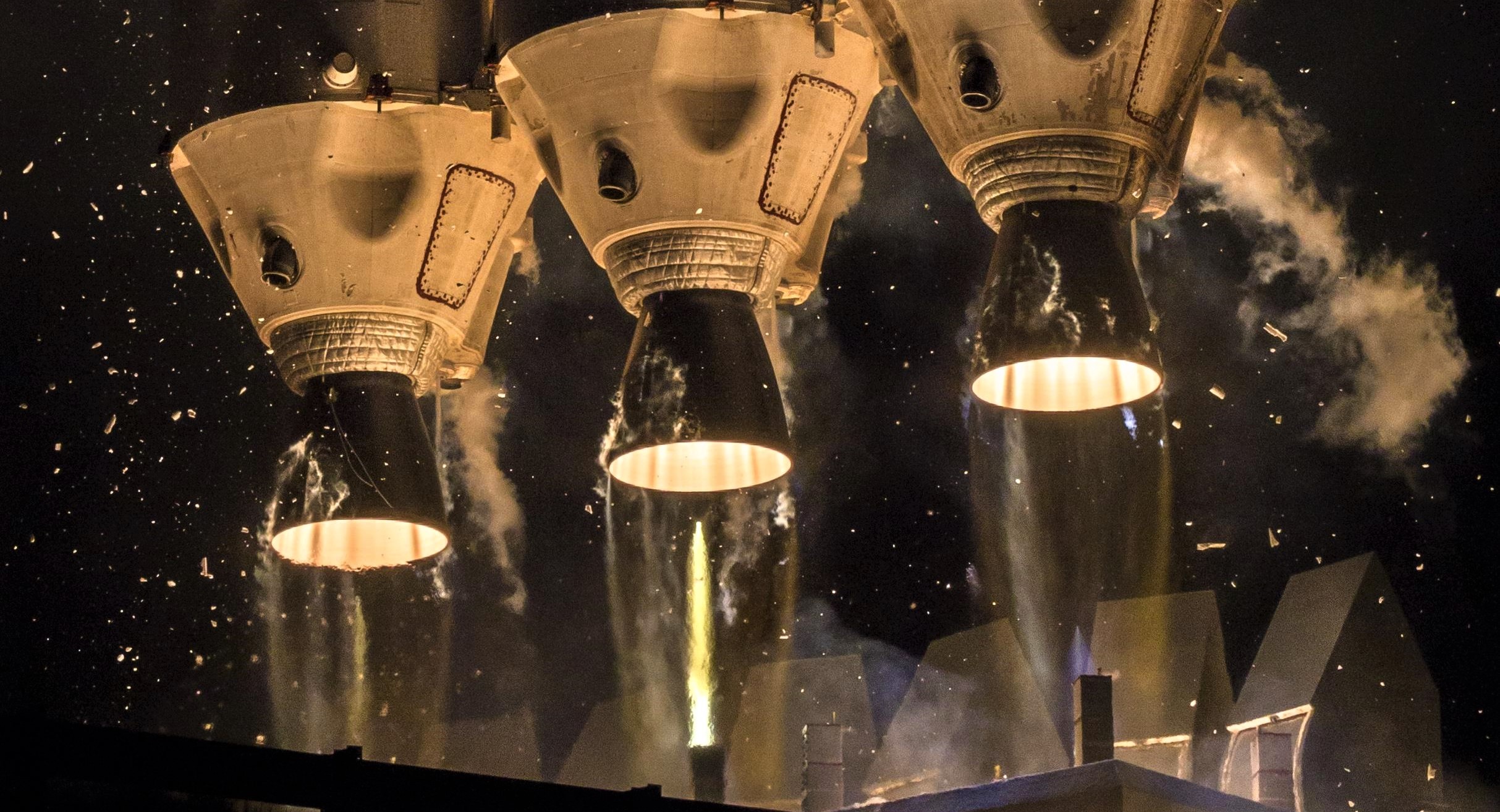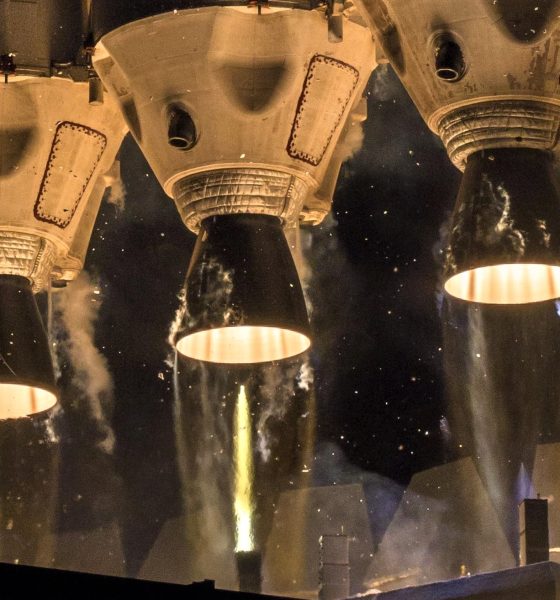

News
ULA Delta IV Heavy rocket set for National Reconnaissance Office spysat launch
The massive United Launch Alliance (ULA) Delta IV Heavy rocket last launched from Space Launch Complex 37 (SLC-37) at Cape Canaveral Air Force Station in August of 2018 when it lifted NASA’s Parker Solar Probe to a highly-elliptical, heliocentric orbit on a mission to “touch the Sun.”
Two years later, ULA is ready to light its most impressive candle once again for its next launch campaign, NROL-44. This time around the protective payload fairing of the Delta IV Heavy rocket is packed with a sensitive – and highly classified – payload for the National Reconnaissance Office (NRO). The NRO is an office of national security that oversees a fleet of spy satellites for the United States government. Since becoming operational in 2004, ULA’s Delta IV Heavy rocket has completed eleven operational missions, seven of which were classified missions for the NRO.

A long launch campaign
The NROL-44 launch campaign has been a long one, to say the least. The three Delta IV common core boosters were delivered to ULA’s Horizontal Integration Facility during the summer of 2019. There the boosters were integrated with one another while the forward end of the center booster was mated with the Delta Cryogenic Second Stage (DCSS). The DCSS is outfitted with a single Aerojet Rocketdyne RL10B-2 engine capable of 24,750 lbf of thrust used to propel the secretive payload to orbit once the common core boosters have separated.
In November 2019, the rocket was rolled to the SLC-37 Vertical Integration Facility and raised by ULA’s Fixed Pad Erector into a vertical position to await the integration of its precious payload. In January 2020, ULA completed pre-launch initiatives including standard testing and a complete Wet Dress Rehearsal of Day of Launch activities involving fueling and de-tanking of the liquid hydrogen and liquid oxygen propellants. Since then, the Delta IV Heavy has remained safed and in powered-off status.


Following the recent successful launch of NASA’s Perseverance Mars rover on a neighboring ULA Atlas V just weeks ago, ULA is ready to ignite Delta IV Heavy’s three Aerojet Rocketdyne RS-68A main engines to complete one of the rocket’s remaining final five flights as it nears retirement.
On July 27, the Delta IV Heavy was outfitted with a 5-meter payload fairing safely encapsulating the NROL-44 payload. The massive payload fairing was delivered to SLC-37, raised, and mounted to the top of the center booster and fully integrated DCSS via crane. The mated payload completes the 235 feet (72 meters) tall full stack of the Delta IV Heavy rocket which will weigh in at 1.6 million pounds (725,750 kg) once fueled before lift-off.
Reliability worth the cost
In a company blog post, ULA’s launch operations director and general manager, Tony Taliancich said, “The Heavy serves the nation’s high-priority U.S. Space Force and National Reconnaissance Office space programs with distinction as America’s proven heavy-lifter.” Although reliable, the Delta IV Heavy is very costly to fly costing nearly $300 million a launch. The heavy class launcher is almost exclusively chosen to fly missions for the U.S. government with the exception of a few NASA missions – Parker Solar Probe and the Orion capsule Exploration Flight Test -1. The five remaining flights of its career are all contracted to lift payloads for the NRO through 2023.
ULA is currently targeting 2:16 am EDT (0616 UTC) on Wednesday, August 26 for the launch of the Delta IV Heavy, however, tropical weather approaching the Florida peninsula is being closely monitored. Should there be any, ULA will publish all updates to the mission timeline on the company’s blog.

News
Tesla FSD fleet is nearing 7 billion total miles, including 2.5 billion city miles
As can be seen on Tesla’s official FSD webpage, vehicles equipped with the system have now navigated over 6.99 billion miles.

Tesla’s Full Self-Driving (Supervised) fleet is closing in on almost 7 billion total miles driven, as per data posted by the company on its official FSD webpage.
These figures hint at the massive scale of data fueling Tesla’s rapid FSD improvements, which have been quite notable as of late.
FSD mileage milestones
As can be seen on Tesla’s official FSD webpage, vehicles equipped with the system have now navigated over 6.99 billion miles. Tesla owner and avid FSD tester Whole Mars Catalog also shared a screenshot indicating that from the nearly 7 billion miles traveled by the FSD fleet, more than 2.5 billion miles were driven inside cities.
City miles are particularly valuable for complex urban scenarios like unprotected turns, pedestrian interactions, and traffic lights. This is also the difference-maker for FSD, as only complex solutions, such as Waymo’s self-driving taxis, operate similarly on inner-city streets. And even then, incidents such as the San Francisco blackouts have proven challenging for sensor-rich vehicles like Waymos.
Tesla’s data edge
Tesla has a number of advantages in the autonomous vehicle sector, one of which is the size of its fleet and the number of vehicles training FSD on real-world roads. Tesla’s nearly 7 billion FSD miles then allow the company to roll out updates that make its vehicles behave like they are being driven by experienced drivers, even if they are operating on their own.
So notable are Tesla’s improvements to FSD that NVIDIA Director of Robotics Jim Fan, after experiencing FSD v14, noted that the system is the first AI that passes what he described as a “Physical Turing Test.”
“Despite knowing exactly how robot learning works, I still find it magical watching the steering wheel turn by itself. First it feels surreal, next it becomes routine. Then, like the smartphone, taking it away actively hurts. This is how humanity gets rewired and glued to god-like technologies,” Fan wrote in a post on X.
News
Tesla starts showing how FSD will change lives in Europe
Local officials tested the system on narrow country roads and were impressed by FSD’s smooth, human-like driving, with some calling the service a game-changer for everyday life in areas that are far from urban centers.

Tesla has launched Europe’s first public shuttle service using Full Self-Driving (Supervised) in the rural Eifelkreis Bitburg-Prüm region of Germany, demonstrating how the technology can restore independence and mobility for people who struggle with limited transport options.
Local officials tested the system on narrow country roads and were impressed by FSD’s smooth, human-like driving, with some calling the service a game-changer for everyday life in areas that are far from urban centers.
Officials see real impact on rural residents
Arzfeld Mayor Johannes Kuhl and District Administrator Andreas Kruppert personally tested the Tesla shuttle service. This allowed them to see just how well FSD navigated winding lanes and rural roads confidently. Kruppert said, “Autonomous driving sounds like science fiction to many, but we simply see here that it works totally well in rural regions too.” Kuhl, for his part, also noted that FSD “feels like a very experienced driver.”
The pilot complements the area’s “Citizen Bus” program, which provides on-demand rides for elderly residents who can no longer drive themselves. Tesla Europe shared a video of a demonstration of the service, highlighting how FSD gives people their freedom back, even in places where public transport is not as prevalent.
What the Ministry for Economic Affairs and Transport says
Rhineland-Palatinate’s Minister Daniela Schmitt supported the project, praising the collaboration that made this “first of its kind in Europe” possible. As per the ministry, the rural rollout for the service shows FSD’s potential beyond major cities, and it delivers tangible benefits like grocery runs, doctor visits, and social connections for isolated residents.
“Reliable and flexible mobility is especially vital in rural areas. With the launch of a shuttle service using self-driving vehicles (FSD supervised) by Tesla in the Eifelkreis Bitburg-Prüm, an innovative pilot project is now getting underway that complements local community bus services. It is the first project of its kind in Europe.
“The result is a real gain for rural mobility: greater accessibility, more flexibility and tangible benefits for everyday life. A strong signal for innovation, cooperation and future-oriented mobility beyond urban centers,” the ministry wrote in a LinkedIn post.
News
Tesla China quietly posts Robotaxi-related job listing
Tesla China is currently seeking a Low Voltage Electrical Engineer to work on circuit board design for the company’s autonomous vehicles.

Tesla has posted a new job listing in Shanghai explicitly tied to its Robotaxi program, fueling speculation that the company is preparing to launch its dedicated autonomous ride-hailing service in China.
As noted in the listing, Tesla China is currently seeking a Low Voltage Electrical Engineer to work on circuit board design for the company’s autonomous vehicles.
Robotaxi-specific role
The listing, which was shared on social media platform X by industry watcher @tslaming, suggested that Tesla China is looking to fill the role urgently. The job listing itself specifically mentions that the person hired for the role will be working on the Low Voltage Hardware team, which would design the circuit boards that would serve as the nervous system of the Robotaxi.
Key tasks for the role, as indicated in the job listing, include collaboration with PCB layout, firmware, mechanical, program management, and validation teams, among other responsibilities. The role is based in Shanghai.
China Robotaxi launch
China represents a massive potential market for robotaxis, with its dense urban centers and supportive policies in select cities. Tesla has limited permission to roll out FSD in the country, though despite this, its vehicles have been hailed as among the best in the market when it comes to autonomous features. So far, at least, it appears that China supports Tesla’s FSD and Robotaxi rollout.
This was hinted at in November, when Tesla brought the Cybercab to the 8th China International Import Expo (CIIE) in Shanghai, marking the first time that the autonomous two-seater was brought to the Asia-Pacific region. The vehicle, despite not having a release date in China, received a significant amount of interest among the event’s attendees.








